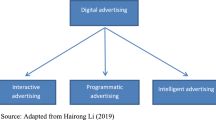Abstract
Shopbots or software agents that enable comparison shopping of items from different online sellers have become popular for quick and easy shopping among online buyers. Rapid searches and price comparison by shopbots have motivated sellers to use software agents called pricebots to adjust their prices dynamically so that they can maintain a competitive edge in the market. Existing pricebots charge the same price for an item from all of their customers. Online consumers differ in their purchasing preferences and, therefore, a seller's profit can be increased by charging two different prices for the same good from price-insensitive and price-sensitive consumers. In this paper, we present an algorithm that partitions the buyer population into different segments depending on the buyers' purchase criteria and then charges a different price for each segment. Simulation results of our tiered pricing algorithm indicate that sellers' profits are improved by charging different prices to buyers with different purchase criteria. Price wars between sellers that cause regular price fluctuations in the market, are also prevented when all the sellers in the market use a tiered pricing strategy.
Similar content being viewed by others
References
Alta Vista Inc. URL: http://www.altavista.com.
Amazon Inc. URL: http://www.amazon.com.
Batson, A. (1998). “Win-Win Interactions Between the Public and Private Sectors.” Natural Medicine, Vaccine Supplement 4(5) (supplement), 487–491.
Ben Schafer, J., J. Konstan, and J. Riedl. (2000). “Electronic Commerce Recommender Applications.” Journal of Data Mining and Knowledge Discovery 5(1/2), 115–152.
Bizrate Inc. URL: http://www.bizrate.com.
Breese, J., D. Heckerman, and C. Kadie. (1998). “Empirical Analysis of Predictive Algorithms for Collaborative Filtering.” In Proceedings of the Fourteenth Annual Conference on Uncertainty in Artificial Intelligence. San Francisco, CA, pp. 43–52.
Brooks, C., S. Fay, R. Das, J.K. Mackie-Mason, J. Kephart, and E.H. Durfee. (1999). “Automated Search Strategies in an Electronic Goods Market: Learning and Complex Price Scheduling.” In Proceedings of the 1st ACM Conference on Electronic Commerce.
Caglayan, A., M. Snorrason, J. Jacoby, J. Mazzu, and R. Kumar. (1997). “Learn Sesame: A Learning Agent Engine.” Applied Artificial Intelligence 11, 393–412.
Clark, D. (2000). “Shopbots Become Agents for Business Change.” IEEE Computer 33, 18–21.
Cohen, S. and V. Ramaswamy. (1998). “Latent Segmentation Models.” Marketing Research 10(2), 14–21.
Dasgupta, P. and R. Das. (2000). “Dynamic Service Pricing Using Brokers in a Multi-Agent Economy.” In Proceedings of the Fifth International Conference on Multi-Agent Systems, Boston, MA, pp. 375–376.
Dasgupta, P. and R. Das. (2000). “Dynamic Pricing with Limited Information in a Multiagent Economy,” In Proceedings of the Fifth International Conference on Cooperative Information Systems. Eilat, Israel, pp. 299–310.
Google Inc., URL: http://www.google.com.
Greenwald, A., J.O. Kephart, and G.J. Tesauro. (1999). “Strategic Pricebot Dynamics.” In Proceedings of 1st ACM Conference on E-Commerce.
Herlocker, J., J. Konstan, A. Borchers, and J. Riedl. (1999). “An Algorithmic Framework for Performing Collaborative Filtering.” In M. Hearts, F. Gey, and R. Tong (eds.), Proceedings of the 22nd Annual International ACM SIGIR Conference on Research and Development in Information Retrieval. New York, NY, pp. 230–237.
Kay, J. (1995). “The um Toolkit for Reusable, Long Term User Models.” User Modeling and User-Adapted Interaction 4(3), 149–196.
Kephart, J. and A.R. Greenwald. (1999). “Shopbot Economics.” In Proceedings of the Fifth European Conference on Symbolic and Quantitative Approaches to Reasoning with Uncertainty.
Kephart, J., J. Hanson, and A. Greenwald. (2000). “Dynamic Pricing by Software Agents.” Computer Networks 32(6), 731–752.
Kramer, M. (2001). “ATG's Dynamo Scenario Server: Scenario-Based E-Commerce, CRM, and Merchandising.” White paper. URL: http://www.atg.com/repositories/ContentCatalogRepository_en/white_papers/PSGReport.pdf.
Manna Inc. URL: http://www.mannainc.com/products.html.
Moai. URL: http://www.moai.com.
My Simon. URL: http://www.mysimon.com.
Nelder, J. and R. Mead. (1965). “A Simplex Method for Function Minimization.” Computer Journal 7, 308–313.
Net Perceptions. URL: http://www.netperceptions.com.
Orwant, J. (1995). “Heterogenous Learning in the Doppelganger User Modeling System.” User Modeling and User-Adapted Interaction 4(2), 107–130.
Paiva, A. and J. Self. (1995). “TAGUS: A User and Learner Modeling System.” User Modeling and User-Adapted Interaction 4(3), 197–226.
Press, W., S. Teukolsky, W. Vetterling, and T. Flannery. (1988). Numerical Recipes in C. Cambridge, MA: Cambridge University Press.
Pricing Central. URL: http//www.pricingcentral.com.
Reseller Ratings Inc. URL: http://www.resellerratings.com.
Site Sell Inc. URL: http://www.sitesell.com.
Talus Solutions. URL: http://www.talussolutions.com.
Tesauro, G. and J.O. Kephart. (1999). “Pricing in Agent Economies Using Multi-Agent Q-Learning.” In Proceedings of Fifth European Conference on Symbolic and Quantitative Approaches to Reasoning with Uncertainty.
Trivedi, M. (1999). “Using Variety Seeking Based Segmentation Models.” Journal of the Academy of Marketing Science 27(1), 37–49.
Author information
Authors and Affiliations
Rights and permissions
About this article
Cite this article
Dasgupta, P., Melliar-Smith, P.M. Dynamic Consumer Profiling and Tiered Pricing Using Software Agents. Electronic Commerce Research 3, 277–296 (2003). https://doi.org/10.1023/A:1023479107359
Issue Date:
DOI: https://doi.org/10.1023/A:1023479107359




